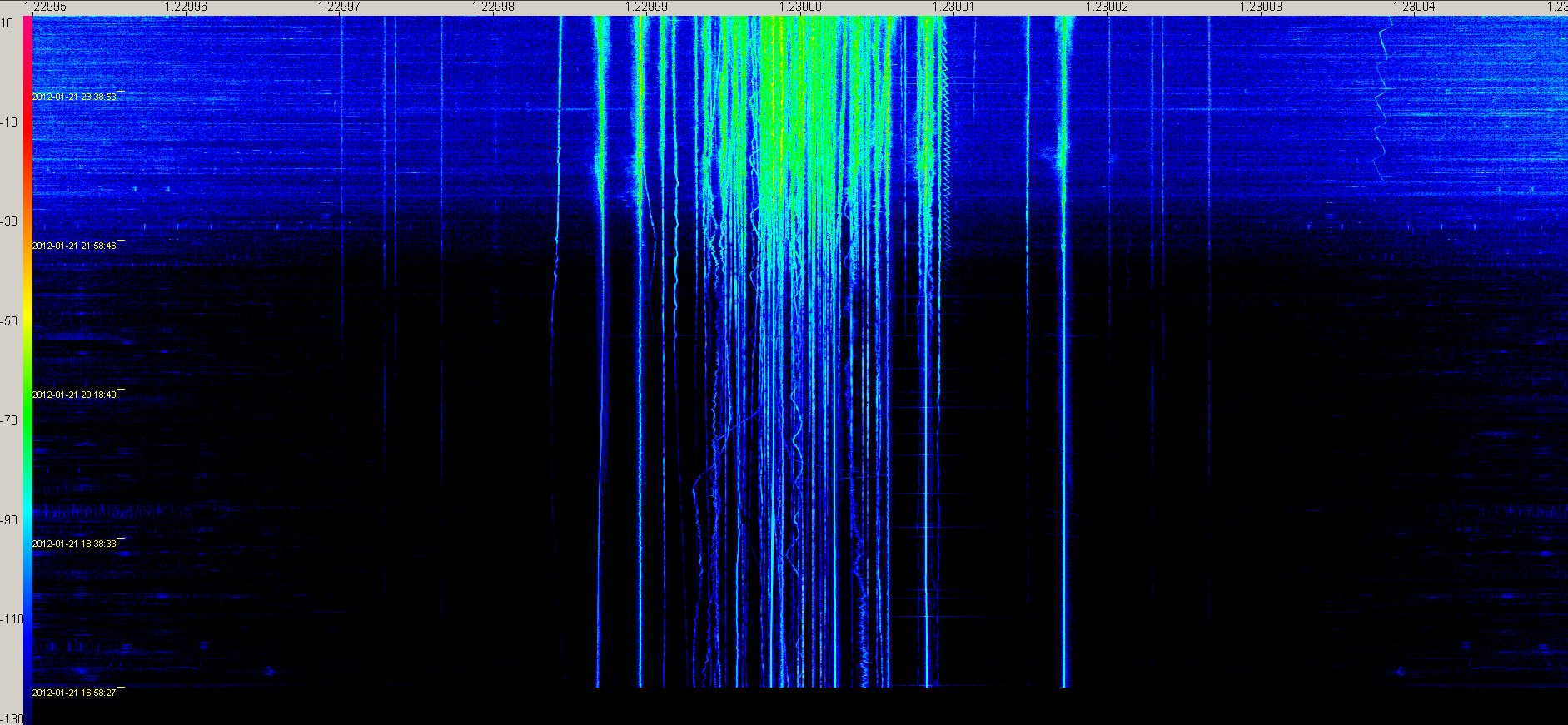Below is a waterfall of 1230 kHz, captured with the netSDR. The recording starts just before 1700 UTC (at the bottom of the image) and runs until about 0030 UTC (top of the image), click on the image to expand it:

The total frequency width of the graph is 100 Hz, that is it extends +/-50 Hz from 1230 kHz. Now that I have the Rubidium Reference on the netSDR, I don’t have an issue with the radio itself drifting over time.
1230 kHz is a “graveyard” medium wave frequency in the US. There are six graveyard channels, 1230, 1240, 1340, 1400, 1450, and 1490 kHz. These channels were set aside as local channels by the North American Radio Broadcasting Agreement, which went into effect in 1941. The term graveyard comes from the weird mix of sounds often heard at night, as dozens of stations mix together. Graveyard stations are restricted to 1000 watts maximum, and some use well under that at night, sometimes under 100 watts.
As you can see by the graph, even at 1700 UTC (local noon) there are dozens of carriers present. Locally I have WRBS 33 miles away and WKBO 40 miles away. Within around 100 miles, there’s quite a few stations.
As it gets later and the D layer starts to go away, new stations appear, and the existing stations get stronger. At about 2200 UTC (5 PM local time) the background noise becomes more obvious as well.
Two of new carriers have an interesting sawtooth pattern to the carrier frequency.
The FCC requires a +/-20 Hz frequency accuracy for medium wave broadcast station carriers. It looks as though most if not all of the stations maintain that, it is impossible to say for sure what some of the outliers are, they could be MW stations or they could be a semi local QRM.

NOw there is some nice steady lines! Looks good!
This is so cool. I need to try this experiment sometime.
I’ve posted some observations I have made on this trace on my blog. You can check it out here:
http://nomadiq.net/?p=158